Android 5.0 Ushers in Its "Final Chapter": A Generation of Classic Systems Tragically Abandoned in the AI Era
![]() 07/16 2024
07/16 2024
![]() 495
495
In the AI era, an AI OS is required.
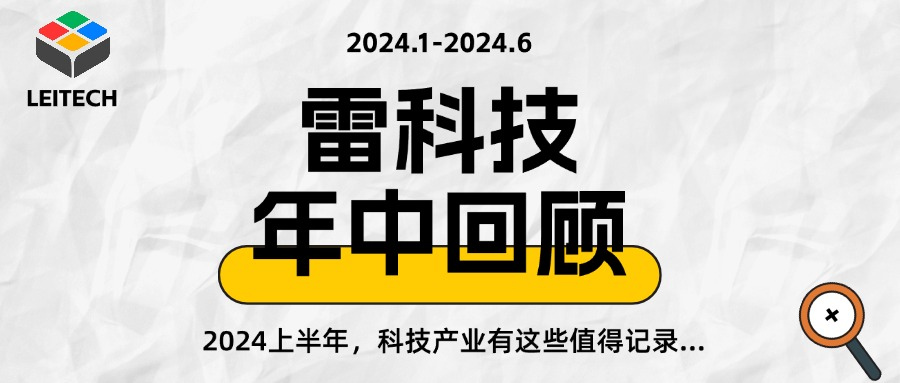
As the world's most popular smartphone operating system, Android has undergone numerous iterations and upgrades since its launch in 2008, resulting in revolutionary changes in visuals, concepts, and functionalities. In this process, Android has transformed from a mere follower of iOS to a dominant force in the mobile device market.
In February 2024, Google released the first developer preview of Android 15, codenamed Vanilla Ice Cream. With this, Android has reached its 15th digit in its version number, and Google's tradition of naming its systems after desserts has persisted for 15 generations. These 15 sweet treats have witnessed the growth of Android and carried countless memories for veteran users.
The update of new versions implies the obsolescence of old ones. Last July, Google ended support for Android 4.4. Today, another name has been added to the obsolescence list: Android 5.0.
In June 2014, Google announced Android 5.0 at Google I/O and officially launched it in November of the same year. The first smartphone to pre-install Android 5.0 was the Motorola Nexus 6. During the Android 5.0 era, the user experience of the Android system significantly improved. The Material Design style brought a refreshing look, and phones based on the Android 5.0 kernel experienced substantial enhancements in overall fluency. While it's not fair to say that Android surpassed iOS in fluency, it at least reached a relatively close state.
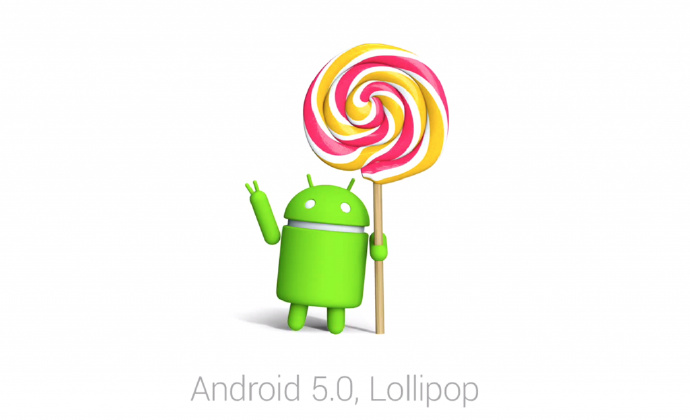
Image Source: Google
I wonder if any of you have used a phone from the Android 5.X era. If so, please feel free to share your memories of Android 5.X in the comments section. Below, let me take you back to 10 years ago to revisit this classic operating system.
A Journey Back to Android 5.X: Brand-new Interface Design + ART Mode Support
In terms of sensory interface design, Google redesigned the system UI towards flatness based on the Material Design style. The new system not only adopted new color schemes but also adjusted the transparency of desktop icons and widgets, allowing various desktop widgets to overlap.
Material Design, literally meaning material design, is a new design language. In handling basic elements, the operation buttons at the bottom of the screen were simplified into equilateral triangles, circles, and squares. The application tray was changed to a pure white background, unifying the visual appeal and user experience across Android devices.
Furthermore, Google comprehensively optimized the notification center, enabling the native system to possess third-party plugin functionalities. For instance, Android 5.0 allows users to view and reply to messages directly from the lock screen, hide sensitive and less urgent content within notifications, and prioritize the display of user-defined important information.

Image Source: Weibo
If users wish to see all detailed notification content on the lock screen, they can simply swipe down to cover other operations. For SMS and WeChat messages, users can directly reply within the notification shade. Simultaneously, Android 5.0 allows individual control over the volume and display of notifications triggered by each application, intelligently sorting notifications based on priority levels.
Moreover, Android 5.0 optimized features such as "OK Google" voice search, facial unlock, priority mode, guest mode, and multi-tasking windows. These functions, which now seem commonplace, were "far ahead of their time" back then and provided development ideas for subsequent system iterations. However, the most impressive update in Android 5.0 has to be ART mode.
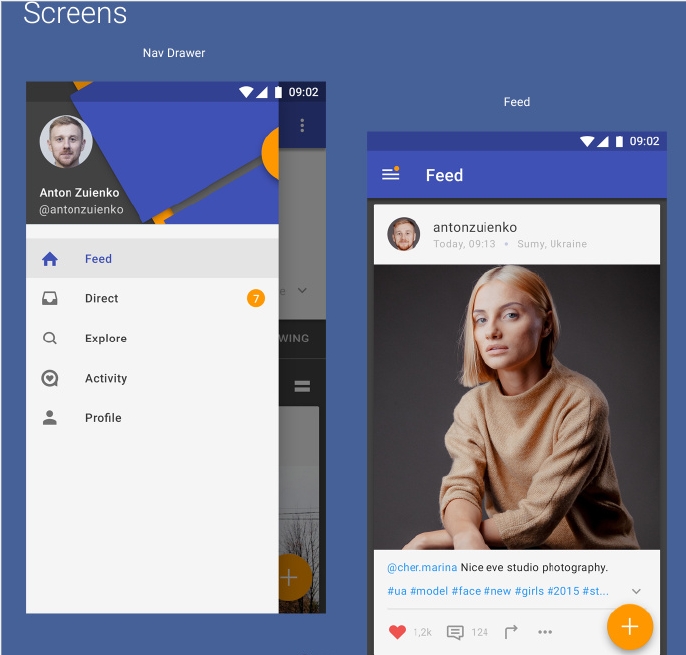
Image Source: Weibo
ART stands for Android Runtime, an application runtime mode. Google introduced this mode in Android 4.4, but most domestic manufacturers "castrated" it and continued to use the Dalvik virtual machine. From Android 5.0 onwards, ART became the default mode for the Android system.
The Dalvik virtual machine relies on a compiler to communicate with applications. Each time an application runs, it needs to instantly transform its code into machine code to execute, which undoubtedly adds a step to the application's operation and can result in relatively faster battery consumption and higher memory usage. Even flagship devices with superior hardware will eventually experience lag and overheating.
Compared to the Dalvik virtual machine, ART mode better addresses these issues. When installing an application, the system automatically pre-reads and compiles the program's code, compiling it directly into machine language, eliminating the need for instant translation. In this way, when the device runs applications, it achieves higher efficiency, power savings, and uses less system memory, making the phone run smoother.
Of course, ART mode is not perfect. While solving the translation problem, it brings some side effects, such as occupying more storage space and taking longer to install programs than the Dalvik virtual machine. Compared to the improved user experience when running applications, these minor flaws are still acceptable.
A Decade After the Release of Android 5.0, Android Enters Its Decline
Once upon a time, classic native Android systems like Android 5.0 were highly praised for their simplicity, efficiency, purity, and elegance, attracting a large fan base. Nowadays, Android's glory seems to reside only in memories.
Android first surpassed 50% of the mobile operating system market in 2015 and peaked in 2019, accounting for 75.47% of the global market share. However, according to StatCounter statistics, as of February 2024, this figure has dropped to 70.69%. The decline in the domestic market is even more pronounced, falling directly to 68%.
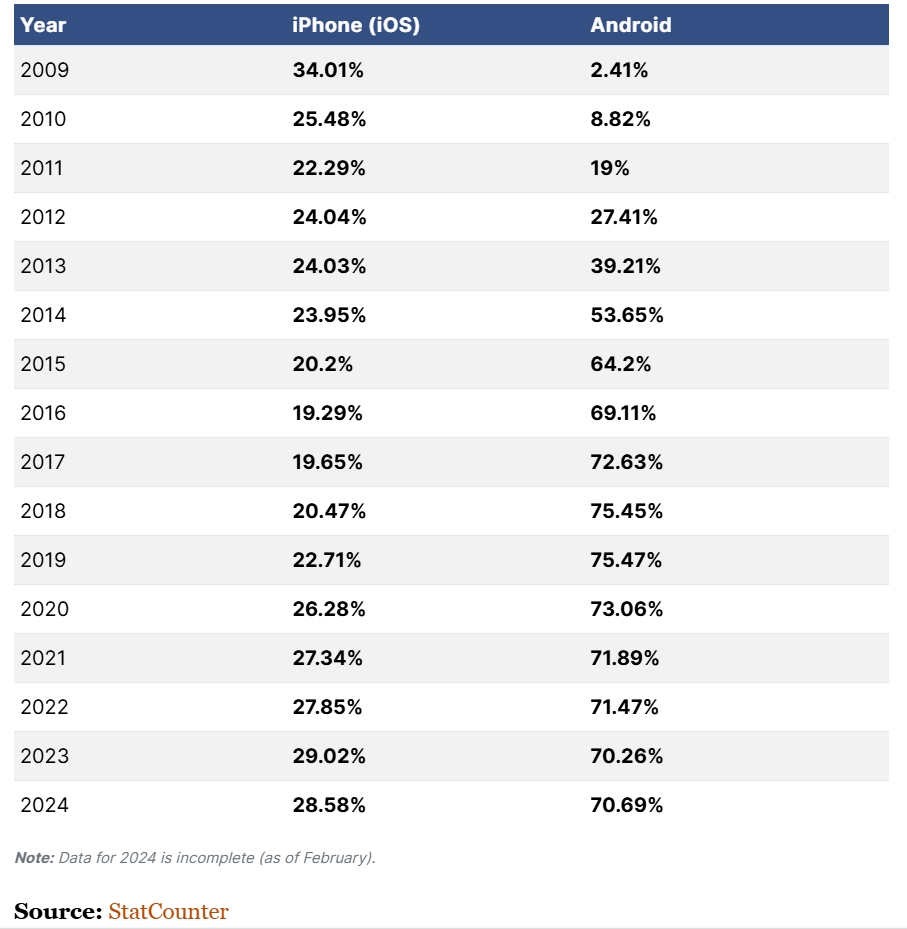
Image Source: StatCounter
Looking around the mobile phone market, custom UIs represented by OPPO ColorOS and vivo OriginOS are actively embracing AI, while operating systems like Huawei HarmonyOS and Xiaomi PengpaiOS are expanding their intelligent ecosystems across multiple devices. Google has fallen far behind. If custom UIs were not included in Android's statistics, Android's market share would likely decline further.
In addition to the rise of competitors, the lagging development of native Android must shoulder significant responsibility for this situation.
Native Android has often been criticized for its overly simplistic UI design and scarce functionalities. A custom system named "MaterialYou" has been in use since Android 13, featuring system UI that matches the colors of the set wallpaper for a more visually harmonious experience. While it is an improvement over previous versions, it still fails to change the unfinished style of native Android.
As for functionalities, native Android is generally lagging behind, with many newly added features already present in most custom UIs. Even with the hot topic of AI, the first developer preview of Android 15 didn't touch upon it at all. It wasn't until three months later at Google I/O that Google announced the deep integration of Android 15 with the Gemini large model. In contrast, domestic manufacturers had already proposed related concepts last year.

Image Source: Google
One of my colleagues purchased a Google Pixel 6 last year to experience the true purity of native Android, expecting a decent experience as it was the first Pixel to feature the Tensor chip. However, the actual experience fell short, even with the combination of native Android and Pixel. The animations were stiff, the background management mechanism was chaotic, and game performance scheduling was poor.
It's essential to note that an unusable operating system can have a significant negative impact on a product, making it difficult to regain consumers' hearts, no matter how powerful the hardware might be.
The Pixel series serves as a prime example. Between 2016 and 2023, the series shipped only 37.9 million units, a performance inferior even to Samsung's A series in a single year, let alone competing with Apple's iPhone.
In contrast, custom UIs have entered a new stage of efficient integration between systems and hardware. Starting in 2020, systems like ColorOS 11, OriginOS, and MIUI 12 introduced a series of innovative features tailored to their products, thoroughly changing users' perceptions of them.
For instance, OriginOS offers highly customizable components like "Morphing Desktop" and "Control Panel," and even its atomic notifications represent a groundbreaking design. ColorOS 11's Quantum Animation Engine 2.0 enables Android phones to possess the silky smooth interruption animations of iPhones. Meanwhile, Android 11 was still focused on floating chat bubbles, highlighting the significant gap between the two camps.
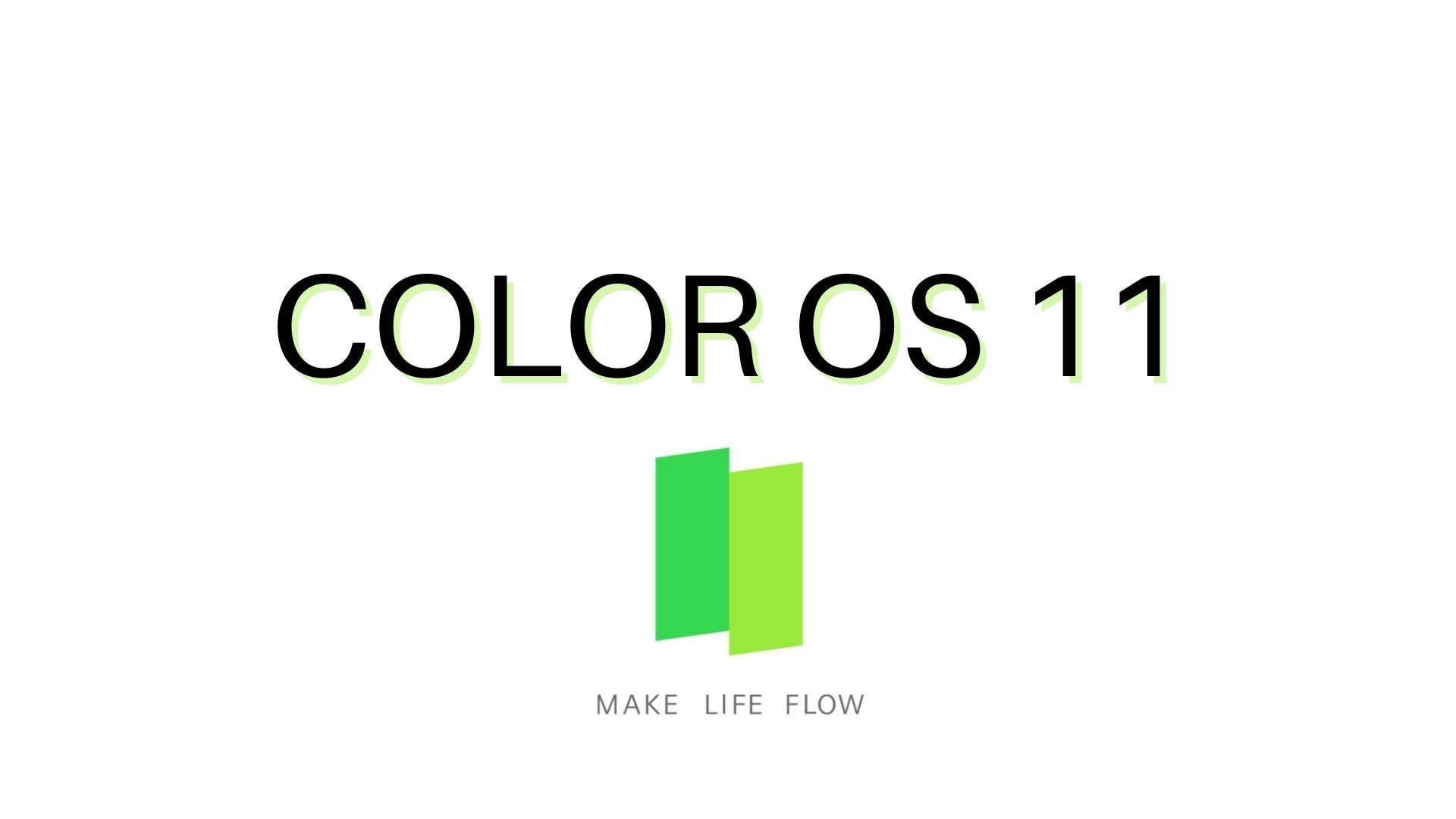
Image Source: OPPO
Ultimately, native Android has indeed fallen behind custom UIs and other operating systems in many aspects, whether due to missing functionalities or outdated aesthetics. Neither of these factors can enable native Android to lead the Android system back to its peak market share in 2019.
Products and systems are complementary entities, and the lag of either will affect overall sales. In the long run, when the underlying architecture of native Android can no longer satisfy the needs of custom UIs, they may choose to go their separate ways. At that time, Android's market share may decline further.
Final Thoughts
I believe many people, like me, fondly recall the Android system during the Android 5.0 era. Back then, both domestic and international Android users paid close attention to the version iterations and functionalities of native Android.
Today, custom UIs often take the lead over native Android, and domestic users no longer pay much attention to when Google updates native Android or what new functionalities and features it brings. They are generally inferior to the custom UIs they use.
Of course, whether it's Android, iOS, HarmonyOS, or custom UIs, everyone is mutually learning from and imitating each other, absorbing each other's strengths. Although distinct features are becoming fewer, the average level of mobile device operating systems is visibly improving and aligning, which is ultimately a good thing for users.
For a long time to come, Android will maintain its dominance in the mobile operating system market. Whether Google can regain its competitiveness with Android 15 and the subsequent Android 16 remains to be seen.
Source: Leitech








